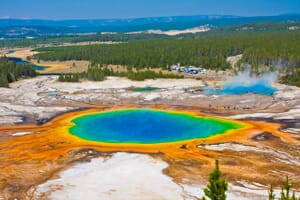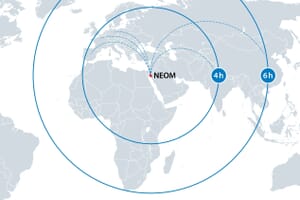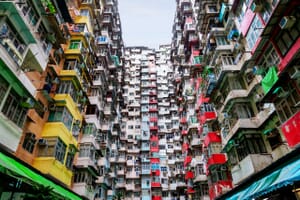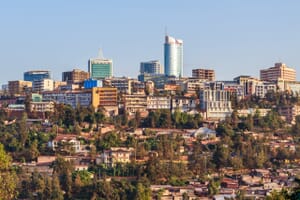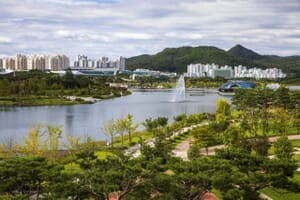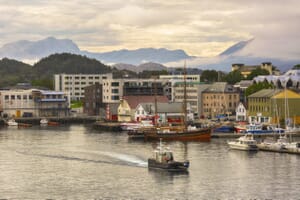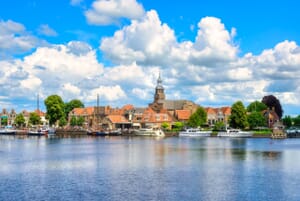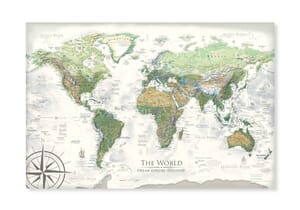Ulaanbaatar is the capital of Mongolia. Ulaanbaatar is not only the political and economic hub but also the cultural center of Mongolia.
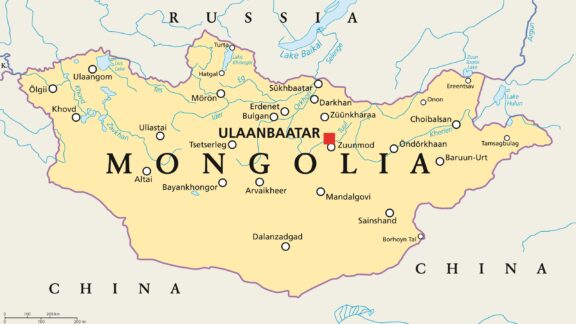
Ulaanbaatar uniquely blends traditional Mongolian culture and modernity, featuring historical landmarks alongside skyscrapers. It is the main gateway for travelers exploring Mongolia’s vast landscapes and nomadic culture.
Where is Ulaanbaatar?
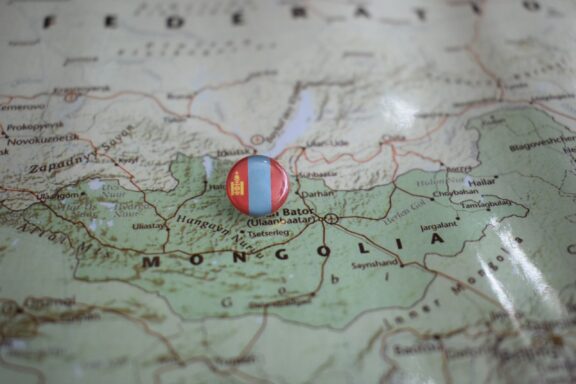
Ulaanbaatar is located in north-central Mongolia on the Tuul River banks. Geographically, it’s positioned in a valley at the foot of the Bogd Khan Mountain range. The city is about 1,300 meters (approximately 4,300 feet) above sea level.
Globally, Mongolia is a landlocked country in East and Central Asia, bordered by Russia to the north and China to the south, east, and west. Ulaanbaatar is roughly equidistant from Moscow to the northwest and Beijing to the south, making it a strategically important location for domestic and international affairs.
History of Ulaanbaatar
The roots of Ulaanbaatar trace back to 1639, when it was established as a movable Buddhist monastic center called 脰rg枚枚. The settlement wasn’t static; it moved 28 times before settling in its current location.
These early years were characterized by religious importance as the site grew around a significant Buddhist monastery.
Later, in 1778, 脰rg枚枚 moved to its current location and was renamed Ulaanbaatar, meaning “Red Hero.” This period saw the city becoming more permanent, transitioning from a nomadic settlement to a fixed location. However, its significance remained essentially religious and spiritual, housing monastic communities that played a key role in Mongolian society.
The 19th century was a period of Qing Dynasty rule over Mongolia, which brought Chinese administrative systems and influence into Ulaanbaatar. The city, however, retained its importance as a center of Buddhism, even under foreign rule.
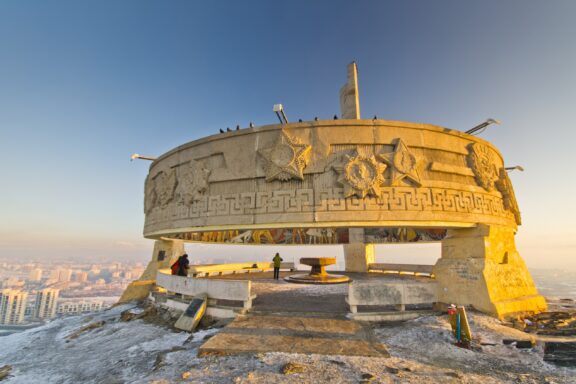
The fall of the Qing Dynasty in 1911 opened the door for Mongolia’s independence. Ulaanbaatar became the political and administrative center of a newly independent Mongolia. In 1921, with the help of Soviet forces, Mongolia underwent a communist revolution, fundamentally altering Ulaanbaatar’s role and appearance.
From the 1920s until the late 1980s, Ulaanbaatar was deeply influenced by Soviet ideology and planning. During this time, the city underwent modernization projects that replaced traditional Mongolian architecture with Soviet-style buildings. The city became more industrialized and urbanized, reflecting the socialist ideals of the time.
In 1990, Mongolia transitioned to a democratic government system, ending years of communist rule. This brought about significant changes in Ulaanbaatar, including introducing market reforms and opening up to foreign investment. The city began modernizing rapidly, developing into a commercial and financial hub.
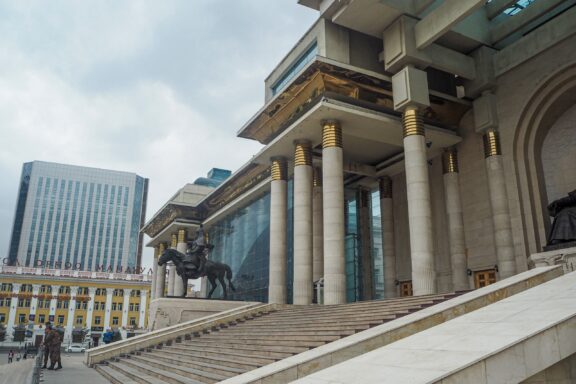
The early 21st century has been remarkable growth and transformation for Ulaanbaatar. The city has expanded in population and infrastructure, with modern skyscrapers, shopping malls, and cultural centers altering its skyline. Ulaanbaatar has embraced globalization while striving to preserve its rich cultural heritage.
Each of these periods has added a unique layer to Ulaanbaatar’s multifaceted identity, making it a fascinating city to explore, both for its ancient traditions and its modern ambitions.
Features of Ulaanbaatar
Ulaanbaatar presents a fascinating blend of the traditional and the contemporary, offering a complex but cohesive urban landscape that tells the story of Mongolia’s past, present, and future.
The city also serves as Mongolia’s cultural heart, teeming with museums, art galleries, and theaters that provide platforms for traditional performances like throat singing and the famous Naadam Festival.
Ulaanbaatar is a city of contrasts and harmonies, where deep cultural roots balance the rush of modern life and the drive for future growth respects a rich historical past. It’s a city that invites exploration and offers many experiences, making it a unique and intriguing destination.
Geography and Climate
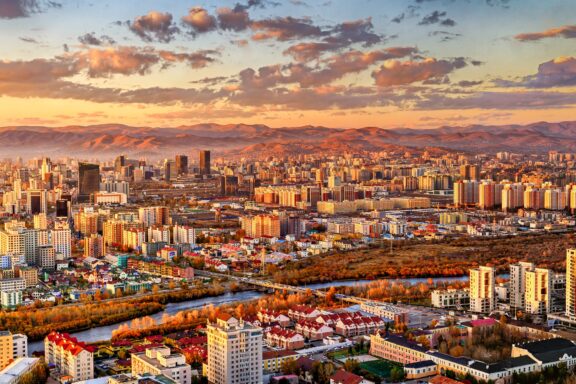
Ulaanbaatar experiences a harsh continental climate characterized by long, frigid winters and brief, mild summers. The city is subject to temperature swings that can be pretty extreme, with winter temperatures often plummeting well below freezing, sometimes reaching as low as -40 掳C (-40 掳F).
Conversely, Summers are relatively mild, with temperatures usually hovering around 20-25 掳C (68-77 掳F). Due to its location, the city is also subject to strong winds, particularly in the winter and spring. The climate creates a challenging but unique living environment, affecting everything from architecture to daily life.
Population
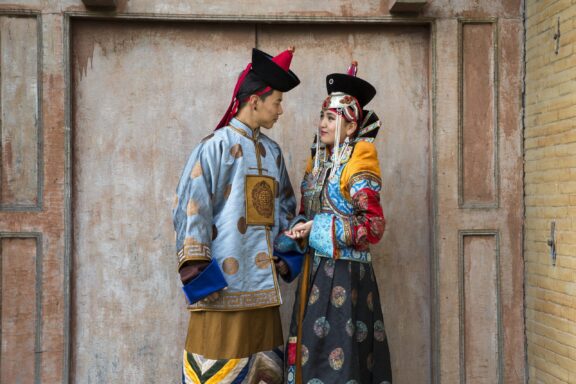
The population of Ulaanbaatar has seen significant growth in recent years, partially due to internal migration from rural areas. The city was home to over 1.4 million people, nearly half of Mongolia’s population.
Demographically, the city is predominantly Mongol, but there are also communities of Kazakhs, Chinese, Russians, and other minorities. A younger generation is emerging that is more globally aware, thanks to increased access to education and the internet. The mix of traditional Mongolian culture with modern influences creates a unique social fabric in the city.
Economy
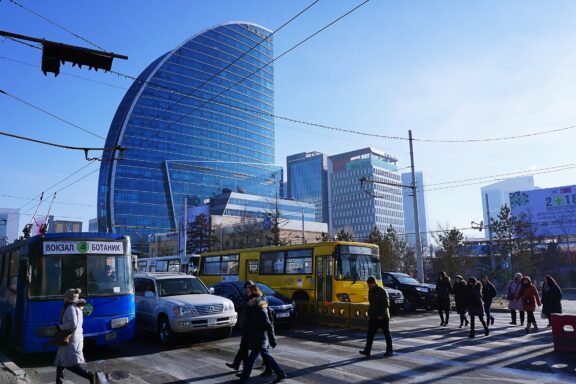
Ulaanbaatar is Mongolia’s economic powerhouse, contributing a significant portion of the country’s GDP. The economy is diverse, with substantial finance, real estate, and information technology activity.
Service industries like tourism and hospitality have also gained prominence in recent years. The city serves as the headquarters for many of Mongolia’s major companies, especially those involved in the mining industry, which is a vital driver of the national economy. Mining activities primarily focus on coal, copper, and gold.
Moreover, Ulaanbaatar is Mongolia’s central hub for foreign trade and investment. The city has attracted many international businesses and investors with its growing economy and strategic location. However, rapid growth has also led to challenges, including infrastructure constraints and environmental issues, which the city is actively working to address.
Things to Do and Places to See in Ulaanbaatar
Ulaanbaatar offers an array of engaging activities and intriguing places to visit. Here’s a guide to some of the city’s most sought-after attractions and experiences.
1. Gandantegchinlen Monastery
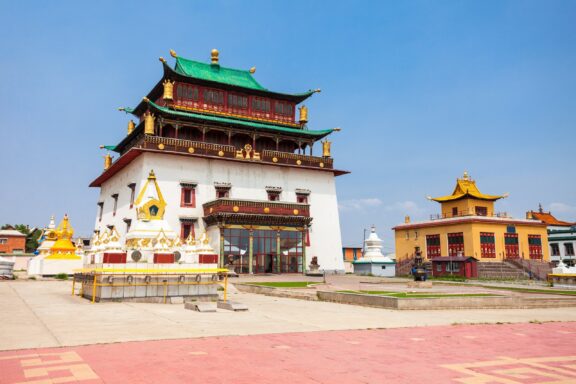
The monastery complex comprises multiple temples, meditation halls, and monastic residences. Visitors will encounter intricate carvings, statues, and thangkas, with the centerpiece being the towering statue of Avalokiteshvara, which was added in 1996. The place resonates with chants, offering an immersive experience.
Even if you’re not religious, the atmosphere at Gandantegchinlen can captivate you. Attend morning prayers, explore the temples, or marvel at the art and craftsmanship. Scheduled guided tours provide historical and cultural insights while visiting the bookstore offers religious literature and souvenirs.
2. Sukhbaatar Square
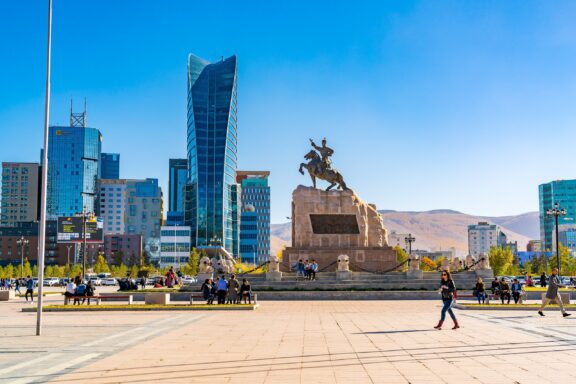
Sukhbaatar Square is not just a public square but the heart and soul of Ulaanbaatar. The court is a testament to Mongolia’s contemporary life and historical underpinnings and is surrounded by important government buildings and commercial centers.
Sukhbaatar Square is more than a photo opportunity. Visitors can often find cultural events, parades, or protests here. The surrounding cafes and restaurants offer a chance to sit, relax, and soak in the square’s unique atmosphere.
3. National Museum of Mongolia
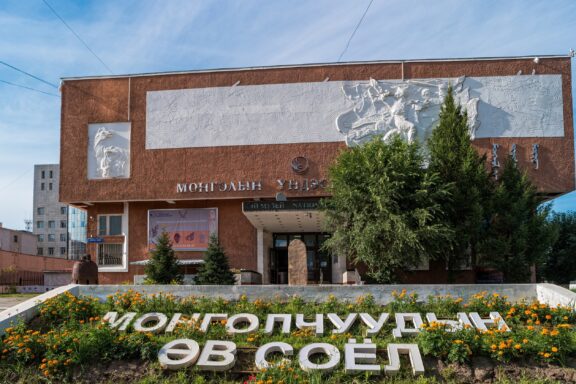
The National Museum of Mongolia is a treasure trove of Mongolian history, culture, and anthropology. Established in 1924, it is one of the oldest museums in Mongolia and holds a diverse collection of over 50,000 historical artifacts.
Guided tours in multiple languages allow visitors to delve deep into Mongolia’s rich past. The museum is more than just a walk-through; it offers interactive exhibits and educational programs that make it suitable for all ages. A visit here will leave you enriched and informed.
4. Bogd Khaan Palace Museum
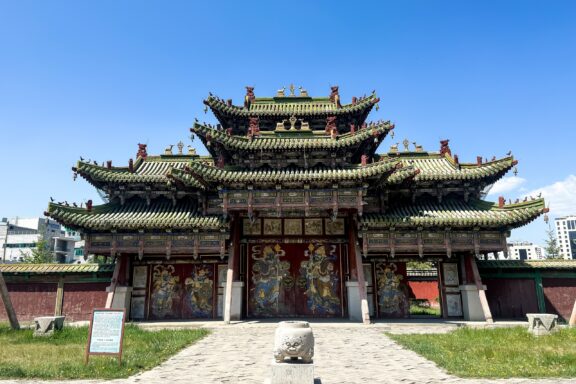
The Bogd Khaan Palace Museum offers an exceptional glance into the life of Mongolia’s last king, the 8th Jebtsundamba Khutughtu, commonly known as the Bogd Khaan. The museum in Ulaanbaatar transports visitors to a time of royal elegance and spiritual leadership.
The complex includes six temples and the Winter Palace, showcasing a fascinating mix of Mongolian and Chinese architecture. The exhibits feature the personal belongings of Bogd Khaan and his wife, as well as a range of art pieces and ceremonial items.
5. Zanabazar Museum of Fine Arts
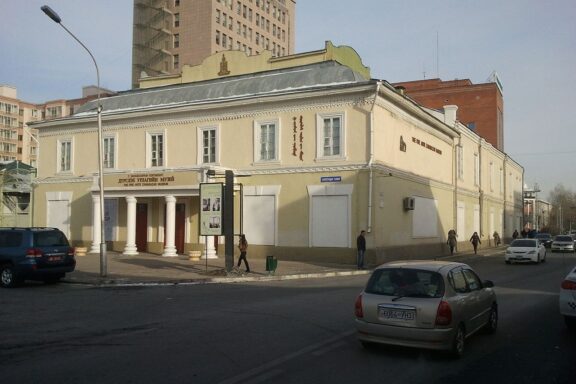
The Zanabazar Museum of Fine Arts stands as a celebration of Mongolian art and aesthetics, named after the polymath and spiritual leader Zanabazar. This museum is the premier institution for traditional Mongolian art, including thangkas, sculptures, and textiles.
Art enthusiasts will find a haven in the Zanabazar Museum. Even those not well-versed in art can appreciate the skill and beauty on display. Regular exhibitions and events keep the experience fresh, and an onsite shop offers art reproductions and books for those looking to take a piece of Mongolian culture home.
6. Galleria Ulaanbaatar
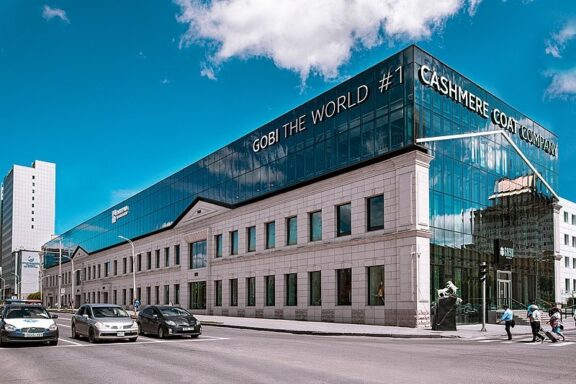
Galleria Ulaanbaatar symbolizes the city’s rapid modernization, starkly contrasting its ancient cultural sites. This shopping mall is the go-to place for luxury shopping and local finds, acting as a microcosm of Ulaanbaatar’s evolving lifestyle.
Whether you’re in the mood for shopping or just looking to escape the elements, the Galleria offers a comprehensive experience. Its central location makes it an easy stop for a quick bite, a shopping spree, or even catching a movie at the multiplex.
7. Choijin Lama Temple
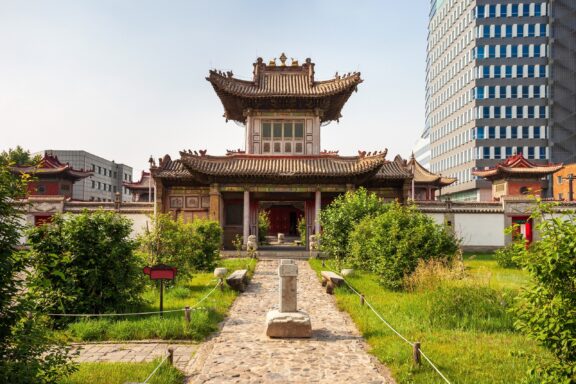
The Choijin Lama Temple eloquently expresses Mongolia’s deep-rooted Buddhist heritage. Initially designed to be a monastic residence, this well-preserved complex now serves as a museum, offering insights into Mongolia’s religious practices and traditions.
As you navigate the temple complex, you may encounter monks engaged in prayer or rituals, enhancing the authentic experience. Special exhibits often run, featuring rare or significant artifacts. The peaceful ambiance provides a respite from the urban rush, making it an ideal space for reflection.
8. National Amusement Park
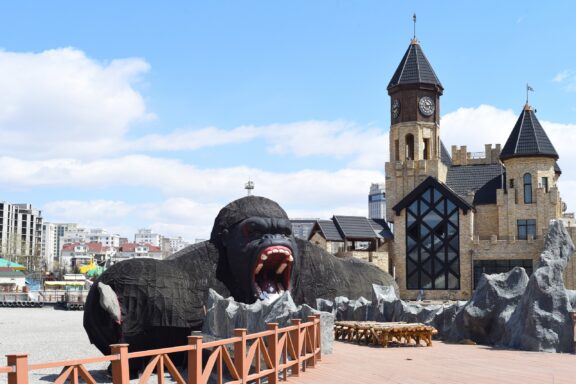
Nestled in the heart of Ulaanbaatar, the National Amusement Park is a surprising twist in a city known for its historical sites and natural beauty. This amusement park brings a touch of playful modernity to the cultural landscape.
The park is a delightful outing for families, offering a break from traditional sightseeing. Whether you want the thrill of a ride or prefer the slower pace of the Ferris wheel, the park offers a little something for everyone.
9. Naran Tuul Market
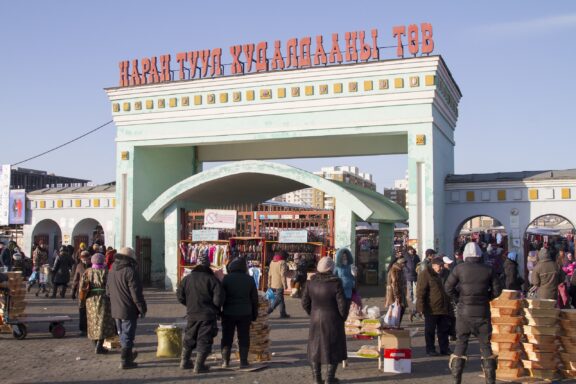
Known colloquially as the “Black Market,” the Naran Tuul Market is a sprawling marketplace that captures the essence of Ulaanbaatar’s diverse commerce. Here, the city’s urban energy and rural traditions merge in a unique blend.
Visitors can hone their bargaining skills while exploring stalls bursting with color and variety. With its authentic atmosphere, the market offers an opportunity to immerse oneself in local life and perhaps pick up a unique souvenir.
10. Take a Trip to Chinggis Khaan Statue Complex
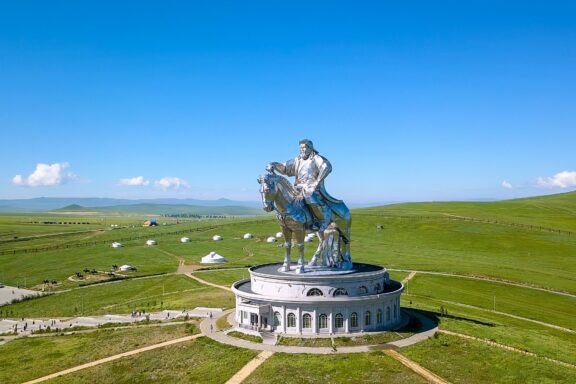
Located about an hour鈥檚 drive from Ulaanbaatar, the Chinggis Khaan Statue Complex is a monumental tribute to the legendary Mongolian leader. Towering at 40 meters, the stainless steel statue is an iconic landmark and a testament to Mongolia’s enduring respect for its historical figures.
Visitors can ascend to the viewing platform in the horse鈥檚 head, offering a panoramic view of the surrounding landscape. The visitor center below offers additional context and history through its exhibits. Whether it’s the thrill of standing in the shadow of such a monumental figure or learning more about Mongolia’s past, the site offers a compelling experience.
Frequently Asked Questions
What is the best time to visit Ulaanbaatar?
The most favorable time to visit Ulaanbaatar is during the summer months, from June to September. During this period, the weather is milder, making it easier to explore the city and its surrounding attractions.
Is Ulaanbaatar safe for tourists?
Ulaanbaatar is generally considered safe for tourists. However, like in any other city, it’s advisable to take standard precautions, especially in crowded areas or during nighttime.
How do I get around the city?
Public transport in Ulaanbaatar includes buses, trolleybuses, and a limited number of taxis. Public buses are an economical but often crowded option. Taxis are more convenient and are reasonably priced by Western standards.
What currency is used?
The currency used in Ulaanbaatar is the Mongolian T枚gr枚g. Credit cards are accepted at many hotels and upscale restaurants, but cash is often preferred in markets and smaller establishments.
Is English widely spoken?
English is increasingly taught in schools, but it’s not universally spoken. Younger people are more likely to understand and speak English. Having a translation app can be beneficial.
What kind of food can I expect?
Mongolian cuisine is meat-heavy, often featuring dishes made from beef, mutton, or goat. Vegetarian options are limited but increasing. International cuisine, especially Chinese, Korean, and Russian, is widely available in the city.
What are some local customs I should be aware of?
Showing respect to elders is a significant aspect of Mongolian culture. It’s also customary to offer items and receive them with both hands or with the right hand supported by the left.
Is the tap water safe to drink?
Tap water in Ulaanbaatar is generally not recommended for drinking. It’s advisable to stick to bottled water.
What electrical outlets are used?
Mongolia uses Type C and Type E electrical outlets. The standard voltage is 230 V, and the frequency is 50 Hz. Travelers are advised to bring a universal adapter.
Do I need a visa to visit?
Visa requirements depend on your nationality. Citizens from some countries can enter Mongolia without a visa for short visits, while others must apply for a visa beforehand. Always check visa requirements well in advance of your trip.
Are there any unique festivals or events?
The Naadam Festival, held in July, is Mongolia’s most famous cultural event. It features traditional games like horse racing, archery, and wrestling. The festivities often start with a colorful parade in Ulaanbaatar.
Final Thoughts
Ulaanbaatar presents a captivating blend of old and new, where ancient monasteries coexist with modern skyscrapers. It serves as a gateway to Mongolia’s vast, untouched landscapes while also offering its own set of urban experiences. The city provides a unique opportunity to delve into Mongolian culture, history, and daily life.
Whether you’re an adventurer, a history buff, or someone looking to explore an off-the-beaten-path destination, Ulaanbaatar offers a rich and rewarding experience. Overall, the city is well worth a visit for those eager to explore its multi-faceted charms and the surrounding natural beauty of Mongolia.
Image Sources and Copyright Information
- Map of Mongolia Highlighting Ulaanbaatar: 漏 Peter Hermes Furian/Shutterstock
- Flag Pin on Ulaanbaatar Map Location: 漏 Aju Arelt/Shutterstock
- Sunset at Zaisan Memorial Monument: 漏 cesc_assawin/Shutterstock
- Government Palace Facade with Columns and Statue: 漏 maryeung/Shutterstock
- Sunset Over Ulaanbaatar Cityscape: 漏 Michal Vit/Shutterstock
- Mongolian Couple in Traditional Outfits: 漏 Katiekk/Shutterstock
- Cityscape of Ulaanbaatar with Modern Buildings and Public Transport: 漏 Amnat Phuthamrong/Shutterstock
- Gandantegchinlen Monastery in Mongolia: 漏 saiko3p/Shutterstock
- Sukhbaatar Square with Statue and Modern Buildings in Ulaanbaatar, Mongolia: 漏 takepicsforfun/Shutterstock
- Exterior of the National Museum of Mongolia: 漏 Stetiukha Kristina/Shutterstock
- Bogd Khaan Palace Museum Exterior: 漏 Zenith Pictures/Shutterstock
- Street View of Zanabazar Museum of Fine Arts: 漏 Yastanovog/Wikimedia | CC BY-SA 3.0 Unported
- Modern Building in Ulaanbaatar Cityscape: 漏 UuganDari/Wikimedia | CC BY-SA 4.0 International
- Choijin Lama Temple in Ulaanbaatar: 漏 saiko3p/Shutterstock
- Amusement Park in Ulaanbaatar with Gorilla Statue and Castle Facade: 漏 Tanya_Terekhina/Shutterstock
- Entrance of Naran Tuul Market with People and Vendors: 漏 alenvl/Shutterstock
- Equestrian Statue in Grassy Field: 漏 Maykova Galina/Shutterstock
